The following 5 Hot peppers are at the top of my list for being the easiest to grow for those new to growing hot pepper growers.
The world of hot peppers is vast, with peppers that are slightly spicy all the way up to peppers that feel like they’re going to burn your face off literally. The 5 peppers I have selected for this article have quite a few things in common.
- Very easy to grow from seed
- Shorter germination time
- Known to be prolific
- Great starter peppers for growers
- All are very mild heat (with the exception of the Jalapeno)
While you certainly don’t have to start your pepper plants from seed, it is very easy and rewarding to do so. There is great joy in growing a plant from seed to harvest.
Cayenne
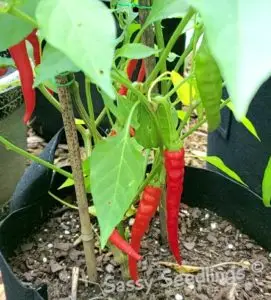
The Cayenne pepper is medium-heat on the Scoville Scale at 30000 to 50000 SHU (Scoville Heat Units). Cayenne peppers are a Capsicum Annum, a species of the plant genus Capsicum.
The peppers are long and skinny with somewhat wrinkled skin. Cayenne’s measure 10 to 25 cm long and are bright red in color when fully ripe. These peppers are great for dehydrating and grinding them into a powder or grinding the dehydrated peppers and adding them to hot red pepper flakes. Using Cayenne’s in these forms lets you add a nice kick to almost anything you cook.
These vigorous plants will keep producing as long as you harvest peppers as they ripen. In grow zones 9b and above, these peppers are perennial. For other grow zones, this pepper would be grown as an annual.
Jalapeno
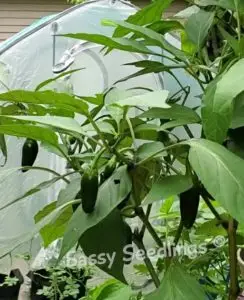
Jalapenos are a medium size pepper. This pepper can range in heat level, but on the Scoville Scale, it normally ranges between 2500 and 8000 SHU. Jalapenos are a Capsicum Annum, a species of the plant genus Capsicum.
Mature Jalapenos usually measure 5 to 10 cm long and have very round and smooth flesh. The plants are strong producers. The peppers start green, which is the color you would buy them in a store. Growing your own Jalapenos allows you to let them ripen to a red color.
Plants will keep providing peppers until the plant is hit with a frost. Jalapenos are great when pickled and used on nachos or pizzas. This pepper is a staple in many salsas. Often enjoyed as an appetizer, Jalapenos can be stuffed with cheese and wrapped in bacon.
Pepperoncini
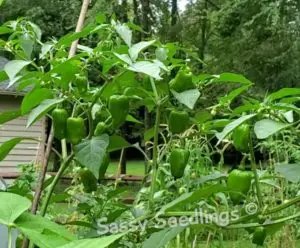
Pepperoncini are very mild peppers. The heat level ranges from 100-500 SHU on the Scoville Scale. Pepperoncini is a Capsicum Annum, a species of the plant genus Capsicum. They measure 8 to 10 cm in length.
There are different varieties of this pepper. The Greek Pepperoncini is the mildest. I’ve also had great success growing Hot Italian Pepperoncini, that is hotter than the Greek version. It is a vigorous plant that will keep producing up until the 1st frost in your area. This pepper is excellent when pickled and used in salads, pizzas, sandwiches, or even sauteed. Most people use this pepper in its pickled form.
Hot Banana
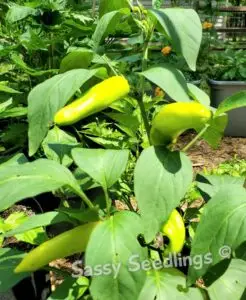
Hot Banana pepper is exceptionally mild. Some may not even consider it a hot pepper. It comes in at 0-500 SHU on the Scoville Scale. This pepper is a Capsicum Annum, a species of the plant genus Capsicum.
These peppers start out a pale green and change to yellow, orange, and then red. The peppers tend to have more heat as they ripen to orange and red. Hot banana pepper plants grow abundant amounts of fruit. Commonly pickled, they are great when used in salads or sandwiches. Fresh peppers can also be stuffed and fried or baked.
Poblano
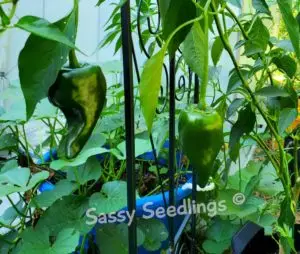
Poblano peppers are low-heat peppers and range from 1,000 to 2,000 SHU on the Scoville Scale. They measure 7-15 cm long. It is called a Poblano, but in its dry form, this pepper is called an Ancho. This pepper is a Capsicum Annum, a species of the plant genus Capsicum.
This pepper plant is very prolific. Typically, people will pick this pepper when it is green, but letting it ripen to red can provide more heat and flavor. Poblanos are great dried, stuffed, or fried. The peppers will grow 3 to 6″ long and about 2 to 3″ wide.